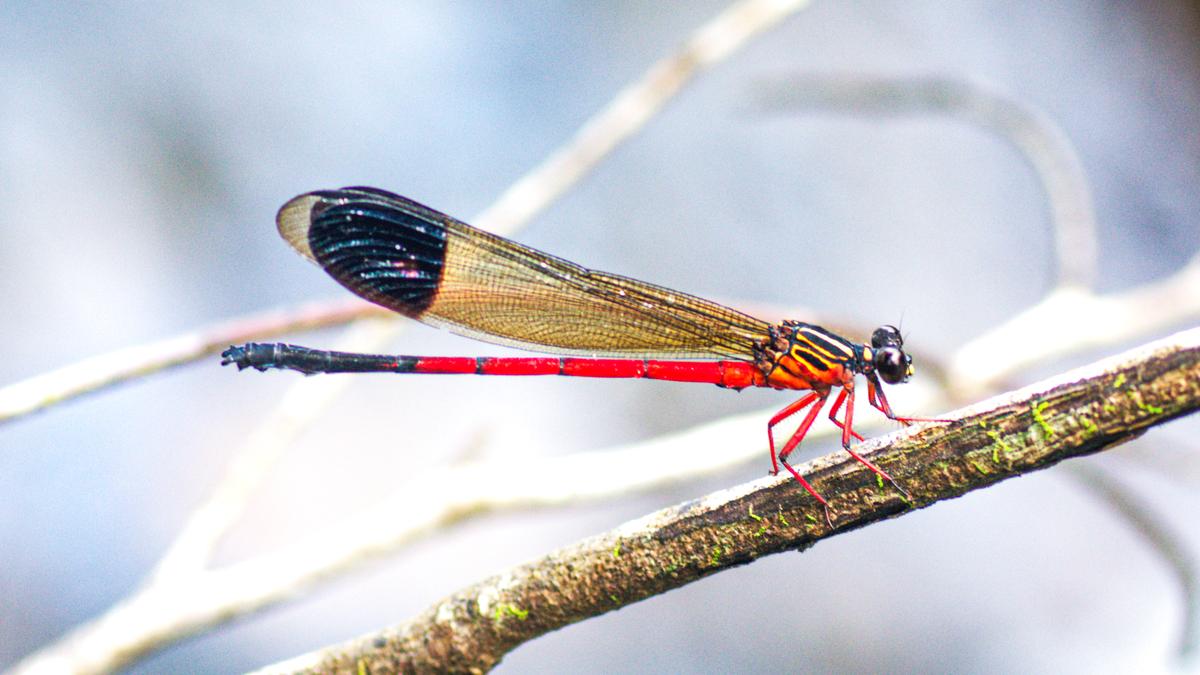Euphaeawayanadensis

- 05 Apr 2025
In News:
A new species of damselfly, Euphaeawayanadensis, has been discovered in the Wayanad region of Kerala, marking a significant addition to India’s odonate diversity.
Key Details:
- Taxonomy:
- Belongs to the family Euphaeidae.
- Officially recognized as Kerala’s 191stodonate species (including damselflies and dragonflies).
- 223rd species recorded from the Western Ghats.
- Discovery and Research:
- First observed in 2013 at Kalindi River, Thirunelli, Wayanad.
- Confirmed after field studies conducted until 2023 across Wayanad, Aralam (Kannur), and western Coorg slopes (Karnataka).
- Discovery published in the peer-reviewed journal ENTOMON.
- Research Contributors:Collaborative effort involving scientists from Kerala Agricultural University, Alphonsa College, and conservation groups like Warblers and Waders, Travancore Nature History Society.
- Identification Process:
- Initially mistaken for Euphaeapseudodispar (from Maharashtra).
- Declared a distinct species based on morphological traits and genetic analysis.
Distinct Morphological Features
- Hind wing: Longer black patch compared to similar species.
- Stripes: Broader, uninterrupted humeral and antehumeral stripes in males.
- Male genital vesicle: Structurally unique from related species.
Habitat & Distribution
- Inhabits fast-flowing rocky streams with aquatic vegetation.
- Found in evergreen and semi-evergreen forests along stream banks.
- Active throughout the year except March–April (dry season).
- Shows restricted distribution, making it ecologically vulnerable.
Conservation Importance
- The discovery underlines the biodiversity richness of the Western Ghats.
- Highlights the need for targeted conservation of aquatic invertebrates in fragile ecosystems like Wayanad.
- Emphasised by experts from the IUCN Dragonfly Specialist Group.
